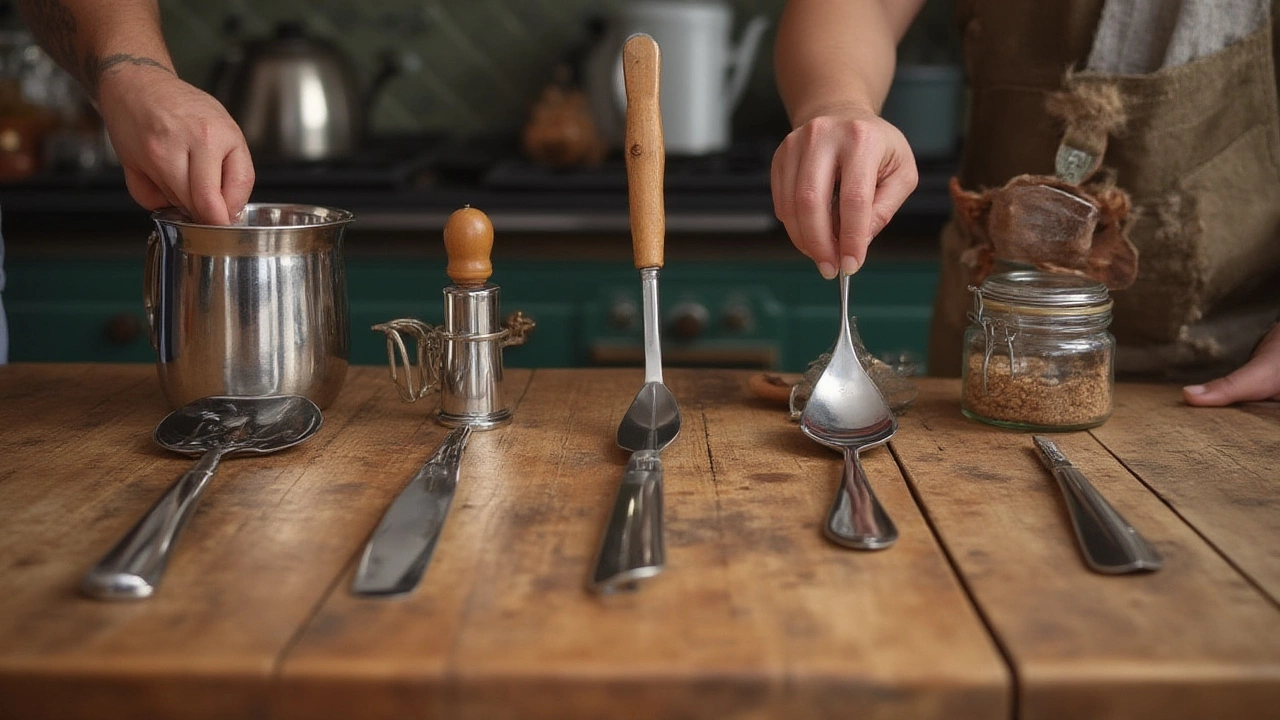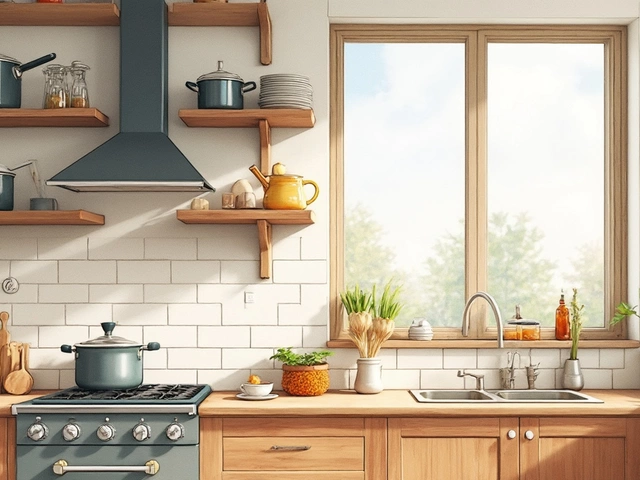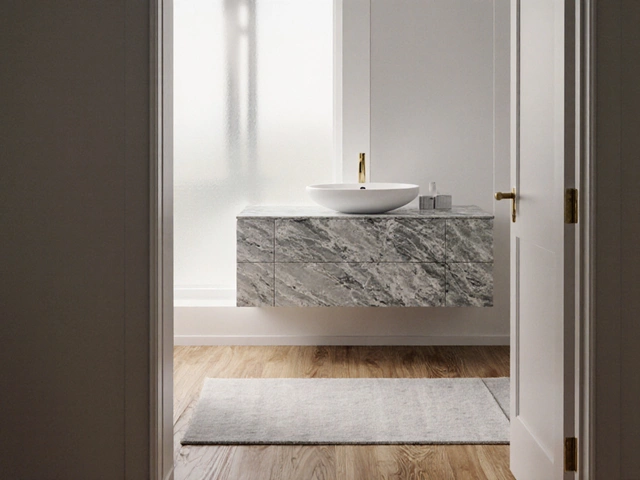How cluttered is your kitchen drawer right now? If you’re like most of us, it’s a jumble of spatulas, whisks, knives, and maybe something unrecognizable you swear will be useful someday. But here’s a surprising twist: almost every kitchen utensil—no matter how random it looks—fits neatly into just five main categories. Once you crack that code, organizing your kitchen (and cooking smarter) suddenly gets much easier. And let’s be honest, who doesn’t want tools that make kitchen life smoother, safer, and maybe even a little more fun?
Cutting and Chopping Tools
Knives sit at the very heart of this group, and for good reason: they’re the ultimate multitaskers. Chef’s knives, paring knives, utility knives—they all have clear jobs. A decent chef’s knife can handle everything from slicing kumara to dicing tomatoes or mincing garlic. If you’re splurging, Japanese steel knives like Global or Shun are famous for their razor-sharp edges and balance. But you’re not just limited to knives. Scissors (great for snipping herbs, opening packaging, or even trimming pizza), mandolins (paper-thin cucumber, anyone?), graters, and peelers also count here. Don’t forget the humble bread knife—nobody wants squashed bread from a wrong blade. A good, sharp peeler makes prepping potatoes or carrots almost satisfying, especially if you’ve wrestled with a blunt one before.
What’s funny is that New Zealand cooks sometimes call vegetable peelers a "potato peeler," which is kind of limiting, but everyone knows what you mean. Mandolins should come with a warning: use the safety guard, always. Emergency room visits due to sliced fingers are more common than you’d imagine—one Auckland hospital reported dozens each month. If you’re eyeing modern gadgets, spiralizers are getting popular for those keen on zoodle salads (that’s zucchini noodles for the uninitiated), though the classic box grater gets the job done just fine for cheese and veggies. Quick tip: keep a knife sharpener handy. Dull blades cause more slips than sharp ones since you’re forced to use extra strength. And there’s a little-known fact for you: in the US, knife injuries send around 350,000 people to hospital A&E every year—most from using dull, neglected knives.
If you want to organize this bunch, try a magnetic strip on the wall for knives and a drawer tray for your peelers and graters. It’s safer and saves space. Here’s a quick comparison table of popular cutting tools:
| Tool | Best For | Tip |
|---|---|---|
| Chef’s Knife | Most slicing, chopping | Keep it sharp |
| Paring Knife | Peeling, small detail work | Great for fruit |
| Bread Knife | Bread, cake, tomatoes | Use sawing motion |
| Scissors | Herbs, packaging | Dedicated pair for food |
| Mandolin | Thin slices (veggies, fruit) | Never skip the guard |
| Box Grater | Cheese, carrots, citrus zest | Caution: knuckles! |
| Y-peeler/Swivel Peeler | Potatoes, carrots, apples | Replace blades when dull |
Knife skills are a game-changer—YouTube’s full of tutorials, and you’ll find Gordon Ramsay explaining things in under two minutes. Once you’re comfortable, you’ll slice prep time in half and keep accidents at bay. And if you’re a home cook who likes making sushi (yes, even in Wellington), a razor-edged sashimi knife is worth the investment. It’s about precision and ease, but honestly, even a sharp paring knife will get you far.
Mixing and Preparation Tools
This category is the one people forget when they’re daydreaming about kitchen upgrades—until they’re elbow-deep in biscuit dough or prepping a big family meal. Mixing bowls are classics here. Stainless steel bowls last for ages, are insanely versatile, and don’t retain old smells. Glass bowls are sturdy, let you see what you’re working with, and can double as microwave or serving dishes, which is great for smaller kitchens. If you’ve ever tried to use a plastic bowl for hot caramel, you probably learned that lesson the sticky way (don’t do it!).
Spoons, spatulas, and whisks—they’re the silent workhorses. Spatulas come in silicone and rubber versions (for scrambling eggs, scraping down batters) and in metal or wooden styles which are best for stirring heavier mixes but should steer clear of nonstick pans. Whisks, from balloon to French to flat, each have their claim to fame. A balloon whisk is perfect for beating eggs or cream, while a flat whisk makes pan sauces lump-free. If you’re whipping up a pavlova—basically a national pride here—use a clean, dry bowl and whisk for peak volume. Good fun fact: a copper bowl actually helps whip egg whites to stiffer peaks (there’s a science reason behind it, but let’s stick to “it works”).
Let’s not forget measuring cups and spoons. Baking, unlike cooking, isn’t forgiving—precision is everything. Metal sets last longer, and some have magnetic handles that clip together so you don’t lose them. Digital scales have blown up in popularity, and for good reason: you get accuracy in grams, perfect for sourdough or those quirky Kiwi recipes that swap between metric and imperial. Citrus juicers, garlic presses, potato mashers, rolling pins, and sieves (those for sifting flour or dusting icing sugar over lamingtons) round out the must-haves. Here’s a clever hack: keep your sieve, microplane zester, and small bowl together for quick zest-and-catch action on busy days.
Organisation tip: if you’re short on space, stack your mixing bowls and keep measuring cups inside them. Drawer dividers help corral loose spatulas and whisks. If you’ve ever cursed at a tangled mass of utensils, try a countertop crock or a hanging rail system to keep things visible and handy. Not everything needs to be on display, though—the unwritten rule is, if you don’t use it weekly, stash it deeper. That way the go-to tools are always at arm’s reach.

Cooking and Baking Tools
This is where things get steamy (literally). This category covers the stuff that taking ingredients from raw to something delicious. Tongs are on almost every Kiwi barbecue, but they’re also priceless for turning bacon, flipping steaks, or grabbing hot toastie from the oven. Ladles, slotted spoons, pasta servers, and turners all play their parts on both stovetop and oven. Wooden spatulas are amazing for risotto or stir-fry—just remember to hand-wash them instead of tossing in the dishwasher.
Pans and pots aren’t usually "utensils" but their helpers—like egg rings, fish slices, and basting brushes—definitely are. Ever tried basting your roast kumara with a silicone brush? It doesn’t melt, washes easily, and lasts for ages. Oven mitts and pot holders protect fingers from disaster, but always double-check—they can hide sneaky burnt spots that suddenly leak heat through. Baking sheets, silicone mats (life changing for cookies), rolling pins, cooling racks, and pie servers also earn a place here. A food thermometer might sound fancy, but it’s the only way to guarantee chicken is safe—75°C at its deepest point, every time.
Kiwi kitchens in winter can get cold, so a kitchen timer means you can wander off and still avoid a burnt dinner (or, as happened in my flat, a smoky kitchen and a trip to the dairy for takeaways). You’ll also want some kind of colander for draining pasta or rinsing veggies. Pro tip: collapsible silicone models save cupboard space. And remember, some tools have regional quirks—Aussies call potholders "oven gloves" and a fish slice is a “turner” in America, so shop carefully if you’re buying online. Here’s another fact: nonstick pan surfaces wear out after a couple of years if you use metal utensils. Switching to wooden or silicone not only protects the pan but saves money in the long run.
Care tips: air-dry wooden spoons, don’t soak them. Replace sponges and dishcloths often—a 2023 New Zealand study found some harbor more bacteria than a toilet seat in just a week. Keep a separate utensil for raw meat to avoid cross-contamination during barbecues or big brunches. And the classic Kiwi trick for stress-free baking: line any tin with baking paper, ditch the sticky mess, and serve up those glorious slices without a fuss.
Serving and Eating Tools
Food’s not done until it’s on the table—this last group takes your creation from pot to plate. Tongs and serving spoons feature again. Salad servers, ladles for soups or punch, and cake lifters get regular love during everything from Sunday lunch to party season. Cheese knives—yes, there are different shapes for soft brie and hard aged goudas. Ever noticed real cheese fans carry a little wire cutter for blue cheese to avoid smashing it?
Everyday cutlery—forks, knives, and spoons—are quietly essential, but there are all sorts of extras: steak knives, dessert forks, tiny espresso spoons, and even sporks (handy for lunchboxes or picnics). Chopsticks are showing up more in Kiwi kitchens now, with Asian cuisines wildly popular, and reusable bamboo or stainless steel sets are a sustainable twist. Ice cream scoops, pizza cutters, pie servers, and oyster knives are proof that sometimes the simplest tool makes the job perfect. If you’re into entertaining, carving sets and serving trays are your best mates. Small cheese-made spoons are a Wellington Farmers’ Market find—ideal for honey or chutney tasting.
Here’s a cool fact: a Dunedin survey found most Kiwi homes have at least three sets of cutlery, and a whopping 82% of households reported missing teaspoons. They all end up in work drawers or, mysteriously, disappear into thin air. If you want yours to last, skip the dishwasher for anything with wood or glued handles, and for silverware, hand-polish every few months to keep tarnish at bay. Try a divided utensil tray—life gets easier when everything’s in the right spot during a busy mealtime. And don’t underestimate the humble salad spinner for draining greens—it saves time, keeps leaves crisp, and even doubles as a berry washer.
Why does any of this matter? Because the right tool, used the right way, keeps cooking fun and, sometimes, even a little magical. Start by figuring out which category each gadget belongs to. You may find you already have each base covered. Or you might spot a gap, like no kitchen thermometer or a solid fish slice for Friday night fish and chips. And the best tip: if you don’t know what something does, ask an older relative or search up a video—half the charm of kitchen gadgets is discovering their clever uses (egg cups double as spice holders, who knew?).







